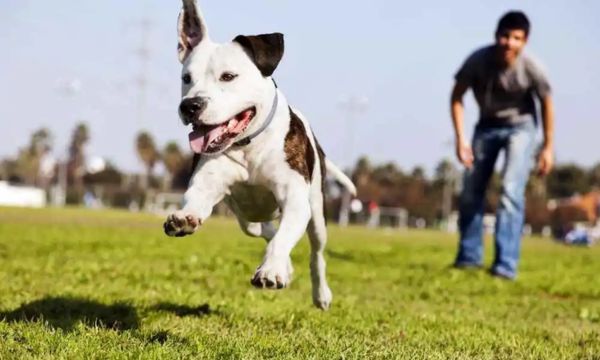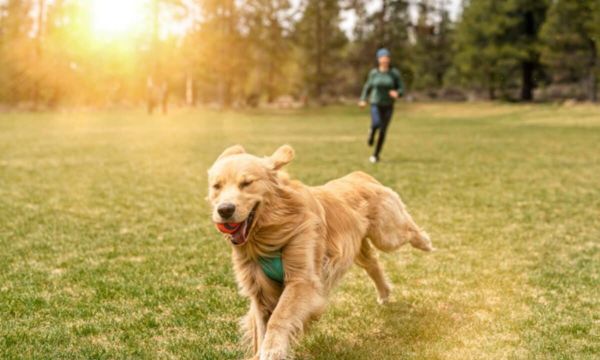Understanding and Addressing Dog Aggression
Aggression in dogs is a complicated and worrying behaviour that can be caused by a number of things. It’s important for dog owners and people who care for dogs to know what causes violence and take steps to deal with and control it. In this detailed guide, we’ll go deep into the world of dog aggression. We’ll look at the different kinds of aggression, what causes it, and what works to make your relationship with your dog safer and more pleasant.
How Dogs Can Be Aggressive in Different Ways:
1. Territorial Aggression
This kind of aggression happens when a dog thinks a certain area is its home and gets angry when other animals or people come close to it. Dogs often bark, lunge, or even bite to show their territorial aggressiveness.
2. Fear Aggression
Fear aggression happens when a dog is scared or anxious in a certain setting or when it is near a certain trigger. When a scared dog feels trapped, it may act strongly to protect itself. This kind of anger can make people do things like growl, snap, or bite.
3. Protective Aggression:
Protective aggression is similar to fear aggression. It happens when a dog thinks that it, its family, or its resources are in danger. This can happen when someone comes close to a family member or when the dog’s food, toys, or territory are threatened.
4. Dominance Aggression:
When a dog tries to dominate another dog or person, this is called dominance violence. It can come out in ways like growling, snapping, and trying to take charge of a situation. But experts disagree a lot about what it means for a dog to be dominant.
5. Redirected Aggression:
When a dog is upset by something but can’t directly attack it, this is called “redirected aggression.” The dog may then turn its aggression towards something unconnected, like another dog or a person nearby.
How to Recognise the Causes and Signs of Aggression:
Reasons Why Dog get Aggressive
Unfamiliar People or Animals: When dogs meet new people or animals, they may act aggressively, especially if they haven’t been socialised well.
Protection of Resources: Dogs might act aggressively if they think that their resources, like food, toys, or places to sleep, are in danger.
Pain or Trouble: When in pain or discomfort, a dog may act aggressively as a way to protect itself.
Fearful Situations: When they feel cornered or stuck in a scary situation, fearful dogs may act aggressively.
Lack of Training: Not having enough teaching and limits can lead to behaviour problems, like aggression.
Signs of being Aggressive:
Growling: When a dog makes this low sound, it can mean that it feels scared or uncomfortable.
Barking and Running: As a way to scare or warn, dogs may bark angrily and lunge at their cues.
Snapping: When a dog snaps, it is clear that it feels attacked and is ready to take its behaviour to the next level.
Biting: The most serious form of violence is biting, which can hurt people or other animals.
Effective Ways to Deal with Aggressive Dogs:
1. Talk to an Expert:
If your dog acts mean, you should talk to a professional dog teacher or a veterinary behaviourist right away. They can look at your dog’s behaviour, figure out what causes it, and make a plan to change it.
2. Training with Positive Reinforcement:
Positive reinforcement training is all about praising the behaviours you want and ignoring the ones you don’t. You can help your dog learn other ways to act by rewarding calm and non-aggressive actions.
3. Deconditioning and Desensitisation:
Gradual desensitisation means introducing your dog to its triggers in a controlled way, starting from a distance where your dog is calm. By pairing the trigger with good things, counterconditioning helps your dog build a good feeling about the trigger.
4. Make the Environment Safe:
Setting up a safe and controlled setting can take away triggers for dogs with fear or territorial aggression. Don’t put your dog in settings that might make it act aggressively.
5. Socialization:
Getting along with other people from a young age on can stop some kinds of violence. Getting your dog used to different people, animals, and places makes them more relaxed and sure of themselves.
6. Medication:
In severe cases, a veterinary may need to give the animal medicine to make it less anxious and aggressive. This should always be used along with changing the way someone acts.
7. Patience and Consistency:
It takes time and patience to deal with violence. Behaviour modification is most likely to work if you train your dog consistently and stay calm when you deal with it.
Case Study: Getting Bella to Stop being Aggressive
Meet Bella, a mixed-breed dog who is four years old and was afraid of people she didn’t know. Mike, who owns Bella, took her to a professional when her aggressive behaviour got worse.
Mike’s Method
Mike worked closely with a qualified dog trainer who came up with a plan to change Bella’s behaviour. The plan was to introduce Bella to people slowly, use positive reinforcement to reward calm behaviour, and teach Bella new commands to get her attention back on something else.
Bella’s growth was clear after a few weeks. She became less nervous around new people and learned to think of their presence as good things. With consistent training and patience, Bella’s fear aggression went down a lot, and she became more confident and calm in many settings.
Conclusion:
To understand and deal with dog violence, you need to know about it, be patient, and take action. You can help your dog stop being violent and live a safer, happier life by figuring out the different kinds of aggression, figuring out what causes them, and using effective training methods. Professional advice, training with positive reinforcement, and a commitment to making a safe environment are all important steps to take if you want to have a good relationship with your furry friend. Remember that every step you take to stop your dog from being aggressive improves their mental health and the quality of their life as a whole.
FAQs:
1. Can all types of dog aggression be dealt with?
Many dog aggressive behaviors can be improved or controlled with proper training and behavior modification. However, the success of treatment depends on the individual dog, the type of aggressive behavior and the underlying cause.
2. Is punishment an effective way to deal with aggressive behavior?
Punishment can exacerbate aggression and lead to more serious behavior problems. Positive reinforcement training and behavior modification are often more effective and humane methods.
3. Can aggressive behavior be a sign of a health problem?
Yes, medical problems can sometimes manifest as aggression. If your dog’s behavior suddenly changes, consult your veterinarian to rule out any underlying medical conditions.
4. Can I adopt a dog with a history of aggression?
Adopting a dog with a history of aggression requires careful consideration and expert guidance. Consult a professional before making a decision and be prepared for potential challenges.
5. Can aggressive behavior be inherited through reproduction?
Aggressive behavior may have a genetic component, but environmental factors also play an important role. Responsible breeding practices and proper socialization can help prevent or mitigate aggressive tendencies.
Be sure to check out our article: Dog Behavior and Nutrition: Vital Connection. You’ll be surprised at how it will help you clarify doubts on the subject.
 Stop Destructive Chewing: Solutions
Stop Destructive Chewing: Solutions
Chewing is a natural behavior for dogs. It keeps them aware of their surroundings, keeps their teeth clean and helps them deal with stress or boredom. […]
Keep reading Enrichment Activities for Behavior Improvement
Enrichment Activities for Behavior Improvement
Owning a pet is a rewarding experience, but it’s also your job to meet your furry friend’s behavioral needs. Activities that provide mental and physical stimulation […]
Keep reading The Role of Exercise in Dog Behavior
The Role of Exercise in Dog Behavior
Exercise is important not only for your dog’s physical health, but also for his or her behavior, mood and overall health. Just as a lack of […]
Keep reading